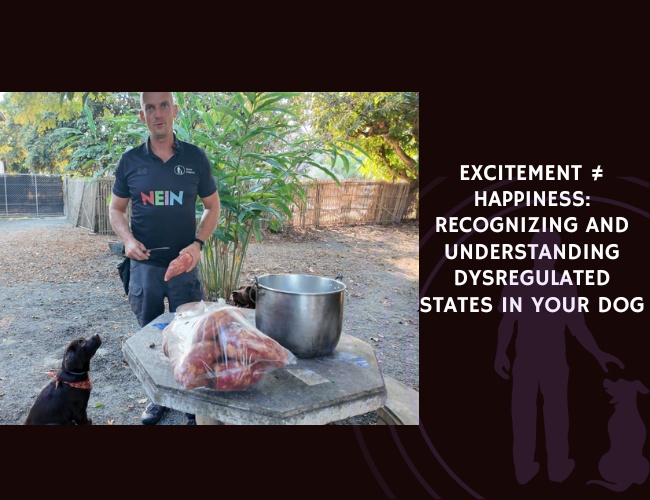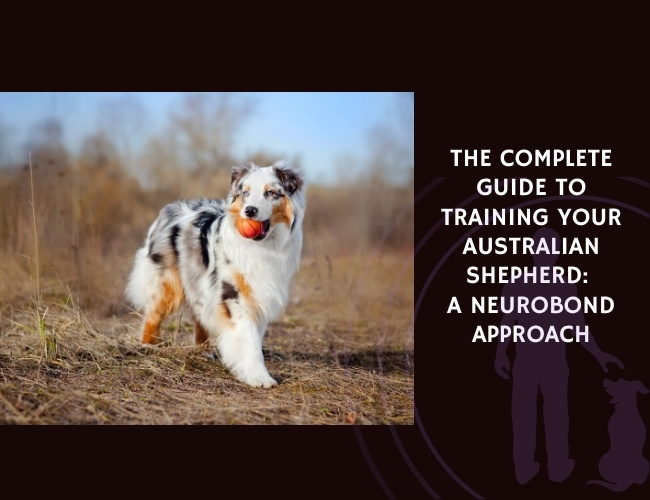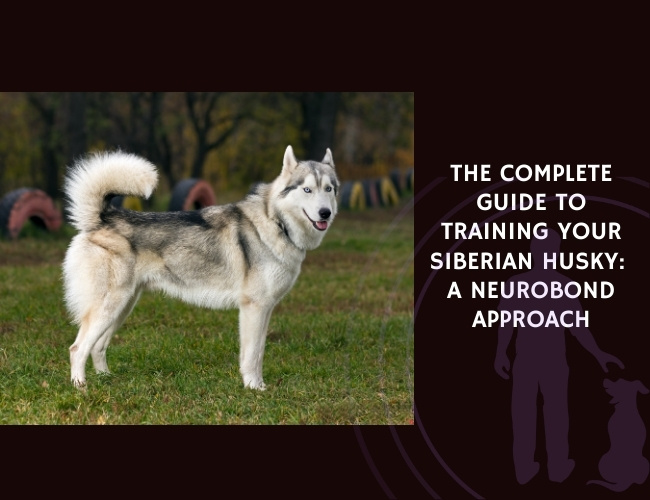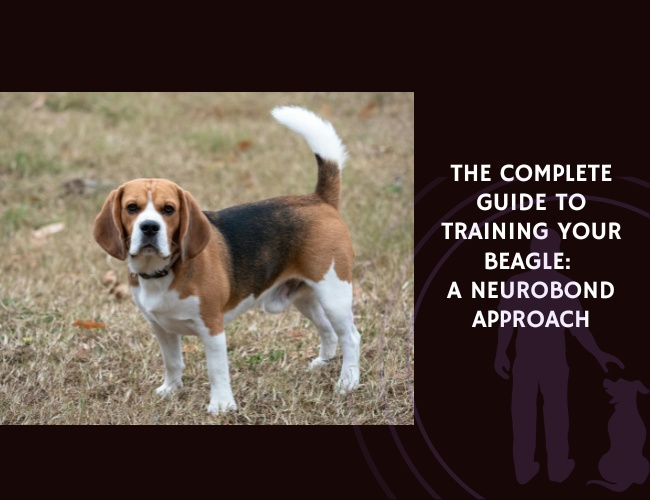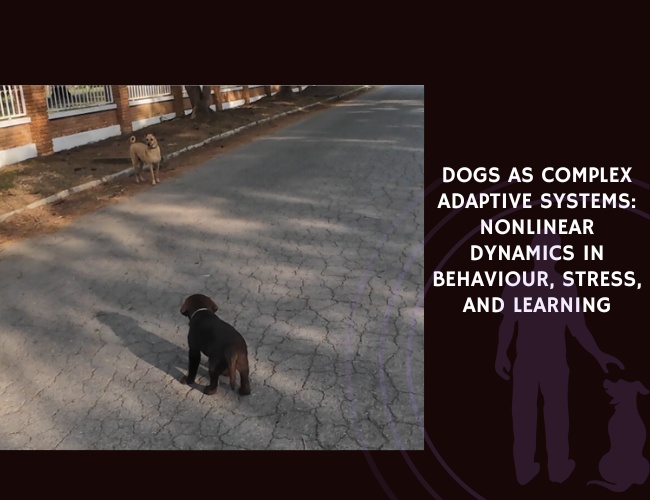Introduction: When Your Dog’s Joy Isn’t What It Seems
Have you ever watched your dog bounce off the walls when you come home, spinning in circles and barking with what seems like pure joy? While it’s natural to interpret this as happiness, you might be witnessing something quite different—a state of dysregulation that’s actually causing your furry friend significant stress. Understanding the crucial difference between genuine happiness and overwhelming excitement could transform your relationship with your dog and dramatically improve their quality of life.
The distinction between true positive emotions and dysregulated arousal states represents one of the most misunderstood aspects of canine behavior. This misunderstanding isn’t just academic—it directly impacts how we interact with, train, and care for our dogs every single day. When we mistake frantic energy for happiness, we inadvertently reinforce behaviors that may be harming our dog’s emotional wellbeing, creating a cycle that can lead to chronic stress, behavioral issues, and a diminished quality of life for both dog and owner.
Let us guide you through the fascinating science of canine emotions, helping you become fluent in your dog’s true emotional language. You’ll discover how to recognize the subtle signs that distinguish genuine contentment from overwhelming arousal, and most importantly, you’ll learn practical strategies to help your dog achieve the balanced, truly happy state they deserve. 🐾
Understanding Arousal vs. Positive Emotions
The Science Behind Your Dog’s Emotional States
When we talk about your dog’s emotional experiences, we’re actually discussing two separate but interrelated dimensions. Arousal refers to the intensity of your dog’s physiological and psychological activation—think of it as the volume dial on their internal state, ranging from deep sleep to frantic excitement. This is fundamentally different from positive affect or valence, which describes the actual quality of the emotion your dog is experiencing.
Your dog can experience high arousal in both positive and negative situations. A dog chasing their favorite ball might show high arousal paired with positive emotions, while a dog frantically barking at the mailman displays similar arousal levels but with negative emotional undertones. The key insight here is that intensity doesn’t equal happiness—a concept that revolutionizes how we understand our dogs’ daily experiences.
This distinction becomes even more critical when we consider the concepts of eustress and distress. Eustress, or positive stress, occurs when your dog experiences manageable challenges that enhance their wellbeing—like learning a new trick or engaging in appropriate play with a well-matched companion. These experiences involve arousal that’s contained within healthy boundaries, allowing your dog to grow, learn, and thrive. Distress, on the other hand, represents overwhelming stress that impairs function and creates negative emotional experiences. When your dog enters a dysregulated state, they’ve crossed from eustress into distress, even if their behavior might look “excited” or “happy” to the untrained eye.
The Yerkes-Dodson Law: Finding Your Dog’s Sweet Spot
The Yerkes-Dodson Law, also known as the Inverted-U Hypothesis, provides a powerful framework for understanding your dog’s optimal arousal levels. This principle demonstrates that performance and learning peak at moderate arousal levels—not too low, not too high, but just right. When your dog is in this “sweet spot,” they’re alert, engaged, and capable of their best learning and social interactions.
Too little arousal leaves your dog bored, unmotivated, and potentially depressed. You might notice lethargy, disinterest in previously enjoyed activities, or excessive sleeping. But here’s where many well-meaning owners go wrong: in attempting to energize their dog, they inadvertently push them into the opposite extreme—dysregulation.
When arousal exceeds optimal levels, your dog’s ability to think clearly, learn effectively, and interact appropriately begins to break down. They might seem “excited,” but they’re actually experiencing something more akin to panic or mania. Their prefrontal cortex—the brain’s executive control center—goes offline, leaving them at the mercy of their limbic system’s emotional impulses. This is why a dysregulated dog can’t respond to cues they normally know perfectly, why they might nip when they’re usually gentle, or why they seem “deaf” to your calls.
Physiological Markers: What’s Really Happening Inside Your Dog
Heart Rate Variability: The Hidden Story of Stress
While you can’t see it with the naked eye, your dog’s heart tells a revealing story about their emotional state. Heart Rate Variability (HRV) measures the subtle variations between heartbeats, and it’s one of the most reliable indicators of whether your dog is experiencing genuine wellbeing or chronic stress.
A healthy, emotionally balanced dog shows high HRV—their heart rhythm flexibly adapts to changing situations, speeding up and slowing down as needed. This variability indicates strong vagal tone and parasympathetic nervous system function, essentially meaning your dog’s “rest and digest” system is working well. When you see your dog lying contentedly after a walk, softly wagging their tail as you pet them, their HRV is likely high, reflecting genuine positive emotion.
Dysregulated dogs show markedly different patterns. Their HRV becomes rigid and low, indicating that their sympathetic nervous system—the “fight or flight” response—has taken over. Even when they appear to be resting, their body remains in a state of physiological stress. This chronic activation takes a tremendous toll, affecting everything from immune function to cognitive ability.
The Cortisol Connection: Understanding Your Dog’s Stress Hormones
Cortisol, often called the stress hormone, follows a natural daily rhythm in healthy dogs. Levels typically peak in the morning, providing energy for the day ahead, then gradually decrease toward evening, preparing for rest. This natural ebb and flow supports healthy metabolism, immune function, and emotional regulation.
In dysregulated dogs, this elegant system breaks down. Elevated basal cortisol means stress hormone levels remain persistently high throughout the day. Even more concerning is the flattened diurnal rhythm—instead of the normal rise and fall, cortisol stays elevated around the clock. Your dog’s body never gets the chance to truly rest and recover, creating a cascade of health and behavioral consequences.
You might notice your dysregulated dog has trouble settling in the evening, experiences disrupted sleep, or seems constantly “wired.” These aren’t personality quirks—they’re symptoms of a stress response system that’s lost its natural balance. The good news is that with proper understanding and intervention, you can help restore your dog’s hormonal harmony.
Neurological Indicators: Reading Your Dog’s Brain State
Modern neuroscience has revealed fascinating insights into what happens in a dysregulated dog’s brain. While we can’t easily perform fMRI scans on our pets at home, understanding these processes helps explain the behaviors we observe.
During dysregulation, brain imaging shows increased activity in the amygdala, the brain’s alarm system responsible for detecting threats and generating fear responses. Simultaneously, there’s decreased activity in prefrontal cortical areas, the regions responsible for executive function, impulse control, and emotional regulation. This neurological imbalance explains why a dysregulated dog literally cannot “think straight”—their rational brain has been hijacked by their emotional brain.
The pupils offer a window into this neurological state. Persistent pupil dilation without appropriate context—when it’s not dark, your dog isn’t in pain, and there’s no immediate threat—indicates sympathetic nervous system activation. Combined with other signs like rapid, shallow breathing and increased body temperature, these physical markers paint a clear picture of internal dysregulation that behavioral observation alone might miss.
Behavioral Red Flags: Recognizing Dysregulation in Daily Life
Hypervigilance: When Your Dog Can’t Switch Off
One of the most common yet overlooked signs of dysregulation is hypervigilance. Your dog constantly scans the environment, unable to truly relax even in familiar, safe spaces. They might lie down, but their body remains tense, ears constantly swiveling, eyes darting to every movement or sound.
This state of perpetual alertness exhausts your dog mentally and physically. They’re essentially living in a state of constant threat assessment, unable to distinguish between genuine concerns and harmless environmental changes. You might notice they startle at minor sounds—a leaf rustling, a car door closing several houses away, or even the house settling. Their recovery from these startles is prolonged; instead of quickly returning to baseline, they remain agitated, sometimes for hours.
Hypervigilant dogs often develop secondary issues. They might become reactive to specific triggers, develop noise phobias, or struggle with separation anxiety. The chronic stress of never feeling truly safe can manifest in digestive issues, skin problems, or a compromised immune system. Understanding hypervigilance as a symptom of dysregulation, rather than just “nervousness” or “alertness,” opens the door to more effective interventions.
Frantic Engagement: When Play Becomes Problematic
We all love seeing our dogs play and have fun, but there’s a crucial difference between healthy engagement and frantic, dysregulated activity. Repetitive, obsessive behaviors are major red flags. Your dog might pace the same path until they’ve worn a track in your yard, spin in circles until they’re dizzy, or chase shadows with an intensity that borders on possession.
These behaviors often start innocently enough. Maybe your dog enjoyed chasing a laser pointer, or they discovered that spinning got your attention. But in a dysregulated state, these activities transform from fun into compulsion. The dog can’t stop, even when they’re exhausted, panting heavily, or clearly not enjoying themselves anymore. They’re caught in a neurological loop, with dopamine dysregulation driving them to repeat behaviors that no longer bring genuine satisfaction.
Lack of self-handicapping in play is another critical indicator. Healthy dogs naturally adjust their play style to their partner—a large dog will play more gently with a puppy, dogs take turns being the chaser and the chased, and they respond to their playmate’s signals to slow down or take breaks. Dysregulated dogs lose this social finesse. They play too rough, can’t read or respond to other dogs’ calming signals, and often escalate play into conflict. What starts as a game ends in tears—sometimes literally.
Vocalization Patterns: Decoding Your Dog’s Voice
Your dog’s voice tells a complex story about their emotional state, and learning to distinguish between different types of vocalizations can help you identify dysregulation early. High-pitched, repetitive barking that seems to lack clear purpose often signals overwhelming arousal rather than communication. This isn’t the purposeful “someone’s at the door” bark or the playful “throw the ball” bark—it’s a frantic, almost mechanical sound that continues regardless of your response.
Whining and yelping in contexts where you’d expect excitement might actually indicate frustration or anxiety. Picture the dog who whines incessantly while you prepare their dinner, unable to wait calmly despite knowing the routine. Or the dog who yelps and cries when they see other dogs on walks, interpreted as “wanting to say hi” but actually expressing overwhelming emotional dysregulation.
The duration and interruptibility of vocalizations matter tremendously. A happy, regulated dog might bark a few times in excitement but can be easily redirected. A dysregulated dog’s vocalizations are prolonged, intense, and seem almost involuntary—they literally cannot stop themselves, even when you ask them to quiet down or try to redirect their attention.

The Tale of the Tail: Understanding Wag Patterns
Perhaps no aspect of dog behavior is more misunderstood than tail wagging. We’ve been conditioned to believe that a wagging tail equals a happy dog, but the reality is far more nuanced. The way your dog wags their tail provides crucial information about their emotional state, and recognizing the difference between various wag patterns can help you identify dysregulation.
A frantic tail wag often appears as a rigid, high, rapid motion with a wide arc. The tail might seem to vibrate rather than flow, and it’s frequently accompanied by overall body tension. The dog’s face shows stress signals—pulled back lips, wide eyes, perhaps panting despite cool temperatures. This type of wag often appears during overwhelming greetings, when the dog is conflicted about approaching something, or when they’re experiencing barrier frustration.
Contrast this with a relaxed, happy wag: the tail moves in a flowing motion, often at mid-height, and the movement extends through the dog’s entire rear end. Their body is loose, their face soft, their mouth relaxed. Sometimes the whole body wiggles with the tail’s movement—this is the genuine happiness we’re looking for. The regulated, truly happy dog’s tail tells a story of emotional balance and positive engagement with their environment.
Context and Misinterpretation: Why We Get It Wrong
The Greeting Game: Misreading Overwhelming Arousal
Every day, countless dog owners return home to what they interpret as the ultimate display of love and happiness: their dog jumping, spinning, barking, and seemingly beside themselves with joy. We’ve been culturally programmed to see these explosive greetings as proof of our dog’s deep affection, but what if these behaviors actually signal something quite different?
When greeting behaviors involve jumping high enough to knock you over, mouthing that leaves marks, vocalizations that hurt your ears, or spinning that continues long after you’ve acknowledged your dog, you’re witnessing dysregulation, not happiness. Your dog has become so overwhelmed by your arrival that they’ve lost behavioral control. They’re experiencing a neurological storm that’s actually quite stressful, even if it looks like excitement from the outside.
The problem compounds when we inadvertently reinforce these behaviors. We might laugh, pet the jumping dog, or excitedly greet them back, thinking we’re sharing a joyful moment. In reality, we’re feeding into their dysregulation, making it harder for them to achieve calm, genuine connection. Over time, these greetings become more intense, not because your dog loves you more, but because their arousal regulation system is increasingly compromised.
Leash Pulling: Eagerness or Emotional Overwhelm?
That constant forward pressure on the leash, interpreted as your dog’s “enthusiasm for walks” or “love of exploration,” often represents something far more complex. Persistent leash pulling frequently indicates frustration, over-arousal, or an inability to process environmental stimuli at a manageable pace. Your dog isn’t just eager—they’re overwhelmed.
Consider what leash pulling actually means from your dog’s perspective. They’re experiencing constant physical pressure on their neck or chest, their breathing may be compromised, and they’re in a state of perpetual forward drive that prevents them from actually enjoying or properly processing their environment. They can’t stop to sniff properly, can’t engage in normal exploratory behaviors, and can’t maintain appropriate social distances from triggers. The walk becomes a blur of overwhelming stimuli rather than an enriching experience.
This chronic state of tension during walks creates a feedback loop. The more dysregulated your dog becomes on walks, the less capable they are of learning loose leash walking. Their prefrontal cortex—necessary for impulse control and learning—is offline, replaced by a limbic system in overdrive. What looks like stubborn pulling is actually a dog trapped in a neurological state that makes calm walking nearly impossible without intervention.
Rough Play: When Fun Crosses the Line
Dogs play-fighting is natural and healthy, but there’s a critical line between appropriate rough-and-tumble play and dysregulated interaction that’s harmful to all involved. Well-regulated play involves clear communication, turn-taking, self-handicapping (where stronger dogs moderate their strength), and regular pauses for reassessment. Dysregulated play lacks all these qualities.
You might see your dog engaging in play that consistently escalates, never includes natural breaks, involves increasingly hard bites, or leaves other dogs cowering or trying to escape. Owners often dismiss concerning behaviors with phrases like “they’re just playing” or “dogs will be dogs,” not recognizing that their dog has lost the ability to engage in healthy social interaction.
The consequences extend beyond immediate physical risks. Dogs who regularly engage in dysregulated play develop problematic social patterns. They might become bullies, unable to make appropriate dog friends, or they might flip into defensive aggression when overwhelmed. Other dogs learn to avoid them, leading to social isolation that further compromises their emotional wellbeing. What started as “enthusiastic play” becomes a barrier to normal social development and maintenance.
Frenzied. Stressed. Misread.
Excitement can deceive. What looks like joy in your dog may actually be dysregulation—an overwhelmed nervous system trapped in high arousal. Mistaking this for happiness risks reinforcing stress rather than nurturing balance.
Arousal isn’t emotion. The intensity of behavior only shows activation, not quality. True wellbeing emerges in the middle ground where arousal supports focus, learning, and calm connection—not in frantic spinning or loss of control.

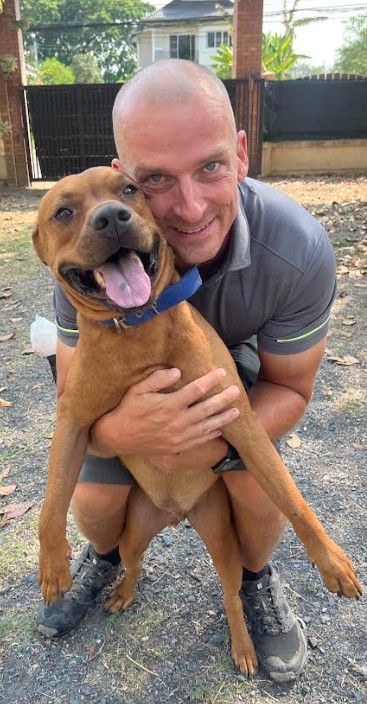
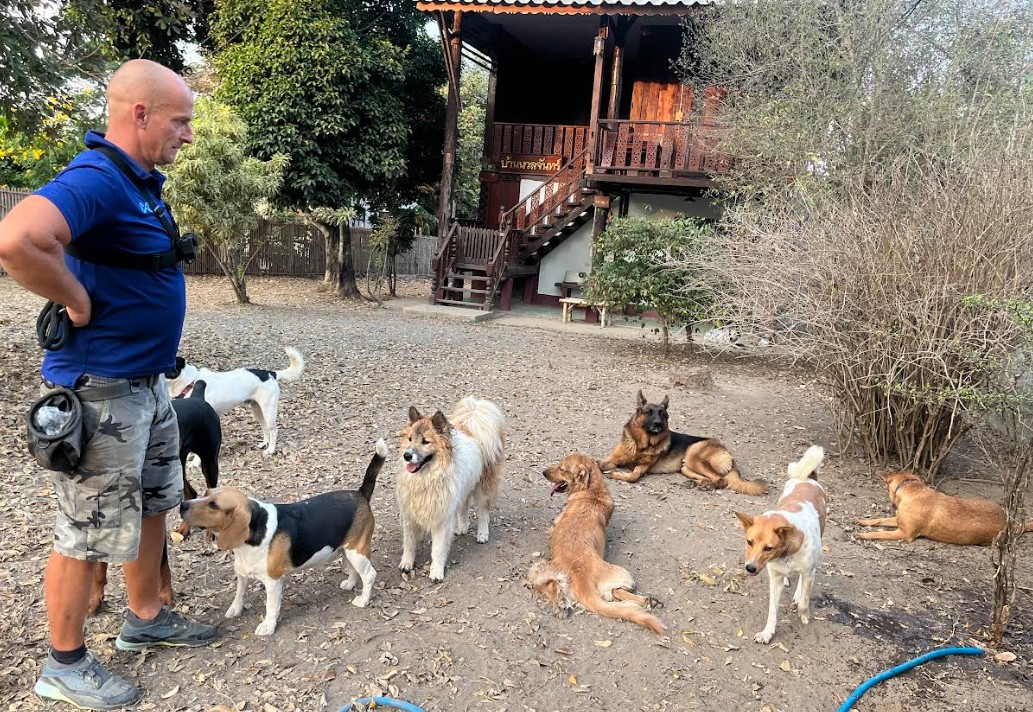
Stress leaves hidden marks. Low heart rate variability reveals chronic sympathetic activation, even when your dog seems “fine.” Genuine happiness shows as flexibility, calm rhythms, and a body at ease with its emotional state.
The Neurochemical Orchestra: Understanding Your Dog’s Brain Chemistry
Dopamine: The Motivation Molecule Gone Awry
Dopamine plays a starring role in your dog’s experience of reward, motivation, and pleasure. In a well-regulated dog, dopamine release follows predictable patterns—anticipation of a reward, engagement in enjoyable activities, and the satisfaction of completing tasks all trigger appropriate dopamine responses. This chemical messenger essentially tells your dog’s brain, “This is good! Do it again!”
In dysregulated states, the dopamine system becomes dysfunctional. Your dog might experience dopamine spikes from activities that aren’t genuinely rewarding anymore, driving compulsive repetition of behaviors. Think of the dog who obsessively fetches until their paws bleed, or who can’t stop barking even when nothing is happening. Their dopamine system is firing inappropriately, creating addiction-like patterns where the behavior itself becomes the driver, not the outcome.
This dysregulation can also manifest as an inability to find satisfaction in normal activities. Your dog might need increasingly intense stimulation to feel any reward, leading to escalating behaviors and difficulty settling for quiet activities. Understanding dopamine’s role helps explain why simply removing triggers or trying to exhaust a dysregulated dog doesn’t work—their brain chemistry needs rebalancing, not just behavioral modification.
Serotonin and GABA: The Missing Calm
While dopamine drives action, serotonin and GABA (gamma-aminobutyric acid) promote calm, contentment, and emotional stability. Serotonin influences mood, sleep, appetite, and social behavior, while GABA is your dog’s primary inhibitory neurotransmitter, essentially putting the brakes on excessive neural activity.
Dysregulated dogs often show signs of serotonin deficiency—poor sleep quality, increased reactivity, difficulty with impulse control, and sometimes even aggressive responses to minor triggers. They might seem unable to experience contentment, always searching for the next stimulation, never truly satisfied. Their baseline emotional state tends toward anxiety or agitation rather than calm readiness.
GABA deficiency manifests as an inability to “turn off.” Your dog can’t settle, can’t stop monitoring the environment, can’t relax their muscles even when lying down. They’re like a car with a stuck accelerator and failing brakes—even when they want to stop, their nervous system won’t allow it. This creates a state of chronic tension that affects every aspect of their life, from sleep quality to social relationships to learning ability.
The Stress Cascade: When Systems Fail
When dysregulation becomes chronic, it triggers a cascade of neurochemical changes that become increasingly difficult to reverse. The HPA (hypothalamic-pituitary-adrenal) axis becomes hyperactive, pumping out stress hormones even in safe situations. The sympathetic nervous system dominates, keeping your dog in perpetual fight-or-flight mode. Meanwhile, the parasympathetic nervous system—responsible for rest, digestion, and recovery—becomes suppressed.
This neurochemical storm doesn’t just affect behavior; it impacts every body system. Chronic stress hormone elevation suppresses immune function, impairs digestion, disrupts sleep architecture, and even affects cognitive function. Your dog might develop recurring infections, digestive issues, skin problems, or show signs of premature aging. What started as behavioral dysregulation becomes a whole-body health crisis.
The inflammatory response triggered by chronic stress creates another layer of problems. Neuroinflammation can affect mood, cognitive function, and pain perception. Your dog might become increasingly sensitive to physical discomfort, show signs of cognitive dysfunction earlier than expected, or develop anxiety disorders that seem to appear from nowhere. Understanding these cascading effects emphasizes why addressing dysregulation isn’t just about training—it’s about comprehensive health and welfare.
Practical Strategies: Helping Your Dog Find Balance
Environmental Management: Creating Calm Spaces
Your home environment plays a crucial role in either supporting or sabotaging your dog’s emotional regulation. Creating spaces that promote calm isn’t about eliminating all stimulation—it’s about providing predictable, manageable experiences that help your dog’s nervous system find balance.
Start by identifying and minimizing unnecessary stressors in your dog’s daily environment. This might mean using window films to reduce visual triggers, creating quiet zones where your dog can retreat without being disturbed, or establishing predictable routines that reduce anticipatory anxiety. Consider the sensory environment too—harsh lighting, loud televisions, or strong air fresheners can all contribute to chronic low-level stress that pushes your dog toward dysregulation.
Enrichment should be thoughtful and appropriate to your dog’s current regulation capacity. A dysregulated dog doesn’t need more excitement—they need activities that promote calm focus and gentle mental engagement. Snuffle mats, lick mats, and food puzzles that encourage slow, methodical exploration can help shift your dog from high arousal to focused calm. The goal is to provide opportunities for success without overwhelming their already taxed nervous system.
Building Regulation Skills: The Path to Genuine Happiness
Teaching emotional regulation is perhaps the most important gift you can give your dysregulated dog. This isn’t about suppressing their personality or creating a “robot dog”—it’s about giving them the skills to experience genuine positive emotions without becoming overwhelmed.
Relaxation protocols form the foundation of regulation training. These aren’t just about teaching your dog to lie down; they’re about creating genuine physiological calm. Dr. Karen Overall’s Relaxation Protocol, for example, systematically teaches dogs to maintain calm while various activities happen around them. Through consistent practice, your dog learns that relaxation is both possible and rewarding, gradually rewiring their nervous system’s default responses.
Impulse control exercises help rebuild your dog’s prefrontal cortex function. Simple games like “It’s Your Choice,” where dogs learn to control themselves to gain access to rewards, strengthen the neural pathways involved in emotional regulation. Start with minimal distractions and very short durations, gradually building your dog’s capacity to maintain control even when excited. Remember, you’re not just training behaviors—you’re literally helping your dog’s brain develop better executive function.

The Role of Routine: Predictability as Medicine
For a dysregulated dog, predictability isn’t boring—it’s therapeutic. When your dog knows what to expect, their nervous system doesn’t need to maintain constant vigilance. They can allocate their limited regulation resources to actual challenges rather than constantly preparing for unknown threats.
Establish consistent patterns for daily activities. Meals, walks, playtime, and rest should follow predictable schedules. This doesn’t mean rigid minute-by-minute planning, but rather creating a framework your dog can rely on. Within this structure, you can introduce controlled variations that help build flexibility without overwhelming your dog’s coping capacity.
Pay special attention to transition times, which are often triggering for dysregulated dogs. Develop calming rituals that signal upcoming changes—perhaps a specific mat where your dog waits before walks, or a consistent pattern of activities before bedtime. These rituals become emotional anchors, helping your dog navigate potentially overwhelming transitions with greater ease.
Professional Support: When to Seek Help
Recognizing When You Need Expert Guidance
While understanding dysregulation empowers you to help your dog, some situations require professional expertise. If your dog’s dysregulation is escalating despite your efforts, if there’s any aggression involved, or if you’re feeling overwhelmed, it’s time to seek professional support. This isn’t a failure—it’s a recognition that your dog’s needs exceed what any single person can provide.
Look for professionals who understand the neurobiological basis of behavior and take a holistic approach to treatment. A qualified veterinary behaviorist can assess whether medical factors contribute to your dog’s dysregulation and might recommend pharmaceutical support to help rebalance your dog’s neurochemistry while you work on behavior modification. Certified behavior consultants who use force-free, science-based methods can develop comprehensive treatment plans tailored to your dog’s specific needs.
Be wary of anyone promising quick fixes or using aversive methods to suppress dysregulated behaviors. Punishment might temporarily stop the outward expression of dysregulation, but it actually increases internal stress, making the underlying problem worse. True resolution requires addressing the root causes, not just suppressing symptoms.
Integrative Approaches: Supporting the Whole Dog
Modern veterinary behavioral medicine increasingly recognizes that addressing dysregulation requires a multimodal approach. Nutritional support can play a surprising role—diets rich in omega-3 fatty acids, appropriate levels of tryptophan (a serotonin precursor), and avoiding foods that cause blood sugar spikes can all support better emotional regulation.
Complementary therapies might include targeted exercise programs that promote calm rather than further arousal, massage or TTouch to support nervous system regulation, or even acupuncture to help rebalance your dog’s energy systems. Some dogs benefit from adaptogenic herbs or supplements, though these should always be used under veterinary guidance.
The key is recognizing that dysregulation affects your whole dog—body, mind, and spirit. Effective treatment addresses all these dimensions, creating conditions that support your dog’s innate capacity for emotional balance and genuine wellbeing.
Long-term Wellness: Maintaining Emotional Balance
Building Resilience: Beyond Crisis Management
Once you’ve helped your dog achieve better regulation, the focus shifts to building long-term resilience. This means gradually exposing your dog to manageable challenges that strengthen their coping skills without overwhelming their system. Think of it as emotional fitness training—just as physical exercise builds strength and endurance, controlled emotional challenges build regulatory capacity.
Start with microsessions of slightly elevated arousal followed by supported recovery. Maybe it’s a brief, exciting game followed by a calming massage, or a short training session with high-value treats followed by quiet mat work. You’re teaching your dog’s nervous system to flexibly move between states, always returning to calm baseline. Over time, your dog develops greater capacity to handle life’s inevitable stressors without falling into dysregulation.
Monitor your dog’s regulatory capacity over time, adjusting challenges based on their current state. Some days, maintaining basic calm might be all they can manage. Other days, they might be ready for more complex challenges. This flexible, responsive approach prevents both under-stimulation and overwhelming, keeping your dog in their optimal learning zone.
Creating a Regulation-Supporting Lifestyle
Supporting your dog’s emotional regulation becomes a lifestyle rather than a training program. Every interaction, every routine, every environmental choice either supports or challenges your dog’s regulatory capacity. This might seem overwhelming, but it actually simplifies decision-making once you understand the principles.
Physical exercise should promote calm strength rather than frantic exhaustion. Long, sniffing-focused walks often serve dysregulated dogs better than high-intensity fetch sessions. Swimming provides excellent physical exercise with naturally calming properties. Training sessions should end with your dog calm and satisfied, not wired and wanting more.
Social interactions need careful management. Your dog might need smaller, calmer playgroups rather than chaotic dog park visits. They might do better with one trusted dog friend rather than constantly meeting new dogs. Respect your dog’s social preferences and capacity—forcing social interactions on a dysregulated dog only increases their stress and reinforces problematic patterns.
Conclusion: The Journey to Genuine Happiness
Understanding the difference between excitement and happiness fundamentally transforms how we see our dogs. That frantic greeting, that obsessive ball-chasing, that inability to settle—these aren’t signs of a happy dog living their best life. They’re cries for help from a nervous system overwhelmed by modern life’s demands, trapped in patterns that prevent genuine wellbeing.
The journey from dysregulation to genuine happiness isn’t always easy, but it’s profoundly rewarding. As you help your dog develop better emotional regulation, you’ll witness transformations that go far beyond behavior. You’ll see your dog’s true personality emerge from beneath the chaos of dysregulation. You’ll discover a capacity for calm joy, deep contentment, and authentic connection that frantic excitement never provided.
Most importantly, you’ll give your dog the gift of genuine wellbeing—the ability to engage with life’s pleasures without becoming overwhelmed, to face challenges without falling apart, and to experience the full spectrum of positive emotions from quiet contentment to appropriate excitement. This is what every dog deserves: not a life of constant stimulation misinterpreted as happiness, but a life of genuine emotional balance and authentic joy.
Your dog’s journey to emotional regulation is also your journey as their guardian and advocate. Every time you recognize dysregulation for what it is, every time you support your dog’s return to calm, every time you choose regulation over excitement, you’re not just training behaviors—you’re nurturing a nervous system, supporting a brain, and ultimately, saving a life. Because a regulated dog isn’t just better behaved—they’re genuinely, authentically, deeply happy. And isn’t that what we all want for our beloved companions? 🧡

